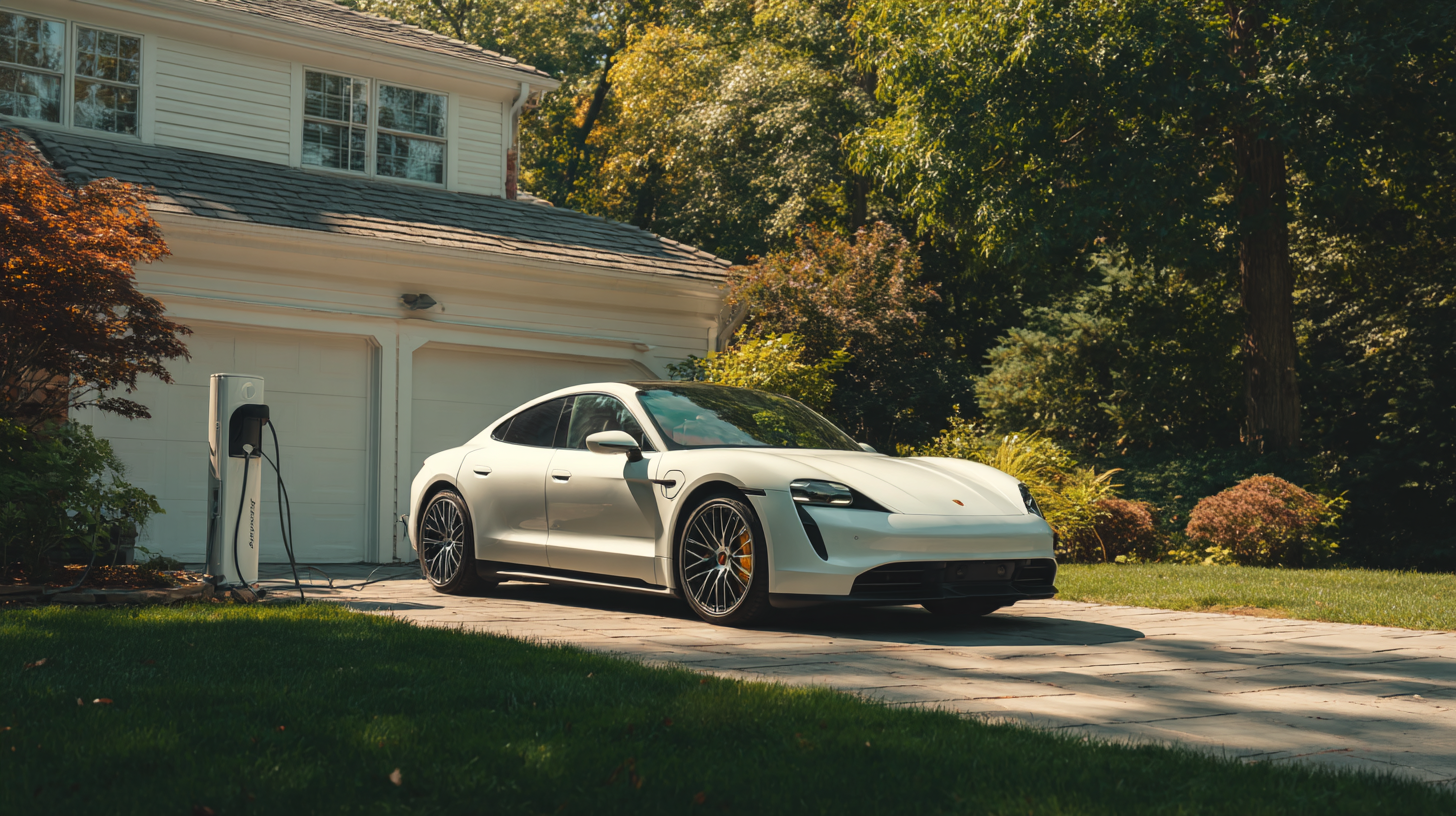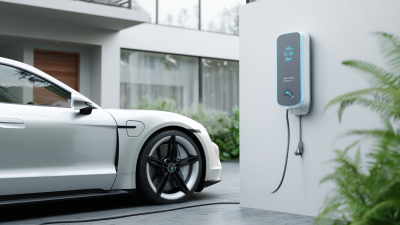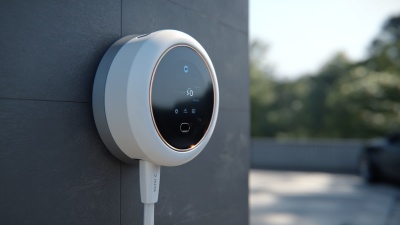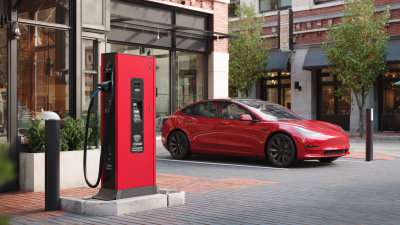As the world pivots towards sustainable living, the adoption of electric vehicles (EVs) is surging, with global registrations expected to reach 145 million by 2030, according to the International Energy Agency. A critical component of this shift is the Home Car Charging Station, enabling eco-conscious consumers to charge their vehicles conveniently and affordably. With over 75% of EV owners opting to charge at home, the demand for efficient home charging solutions continues to rise. A recent report from Bloomberg New Energy Finance highlights that by 2040, it is projected that EVs will make up 58% of global passenger car sales. This growing trend underscores the necessity for homeowners to consider upgrading their properties with reliable home car charging stations that not only support sustainable practices but also enhance property value in a rapidly evolving automotive landscape.

Home car charging stations are becoming increasingly essential as the demand for electric vehicles (EVs) grows.
Understanding the basics of these charging systems can help homeowners make informed decisions. At its core, a home charging station,
often referred to as a Level 2 charger, operates on standard residential voltage (240 volts)
and can significantly reduce charging time compared to a regular outlet.
While standard outlets can take up to 12-20 hours to charge an EV,
Level 2 chargers can do it in just 4-6 hours,
making them an efficient choice for daily use.
Installation of a home car charging station involves more than just purchasing the unit.
It's essential to assess electrical capacity and possibly upgrade the home’s electrical panel to support the charger’s requirements.
Homeowners should also be aware of local regulations and incentives, as many regions offer tax credits or rebates
for installing eco-friendly charging solutions. By grasping these fundamentals, individuals can not only enhance their daily routine but also contribute to a more sustainable future
by supporting the shift toward electric vehicles.
Installing a home car charging station offers significant environmental benefits that extend beyond merely powering your electric vehicle. According to a report by the International Energy Agency (IEA), transitioning to electric vehicles (EVs) can reduce greenhouse gas emissions by up to 80% over their lifetime compared to conventional gasoline cars. By charging at home, EV owners can utilize renewable energy sources, such as solar panels, further decreasing their carbon footprint. This shift not only supports individual eco-friendly initiatives but also contributes to a larger reduction in urban air pollution, which is linked to respiratory diseases and other health issues.
Tip: To maximize the environmental benefits of your home charging station, consider pairing it with solar energy. This combination can greatly enhance your sustainability efforts by allowing you to charge your EV using clean, renewable energy, minimizing reliance on fossil fuels.
Moreover, installing a charging station at home can lead to cost savings over time. The U.S. Department of Energy states that electric vehicles can save drivers an average of $800 annually on fuel costs compared to traditional vehicles. This financial benefit is coupled with the positive environmental impact, making home charging stations an appealing choice for eco-conscious consumers.
Tip: Research local incentives for EV adoption and installation of home charging stations. Many regions offer rebates or tax credits that can significantly reduce the initial costs.

As the electric vehicle (EV) market continues to expand, selecting the appropriate home charging station becomes vital for enhancing your eco-friendly living experience. Industry reports show that global electric vehicle sales are projected to reach 10 million units per year by 2025, which underscores the need for robust charging infrastructure. When choosing a charging station, it's essential to consider the charging speed, power output, and compatibility with your EV model.
There are primarily three types of charging stations: Level 1, Level 2, and DC fast chargers. Level 1 chargers, using standard household outlets, are convenient but can take up to 20 hours to fully charge an EV. In contrast, Level 2 chargers, which typically operate at 240 volts, can significantly reduce charging time to around 4 to 8 hours. For those who require rapid charging, DC fast chargers can replenish an EV’s battery to approximately 80% in just 30 minutes.
According to a study by the International Energy Agency, the shift towards home charging solutions is crucial, as nearly 80% of EV owners charge their vehicles at home, making it necessary to pick the right charging station to meet your needs and optimize efficiency.
When considering the installation of a home charging station for electric vehicles (EVs), several essential factors come into play. Firstly, the availability of adequate electrical infrastructure is crucial. Homeowners must assess their existing electrical system to ensure it can handle the additional load without risking safety or efficiency. Upgrading to a higher amperage may be necessary, which requires consultation with a licensed electrician to evaluate the costs and feasibility of such an upgrade.

Another important consideration is the location of the charging station. Proximity to the main electrical panel and the vehicle parking spot can streamline the installation process and enhance convenience. Furthermore, homeowners should explore available charging options, including Level 1 and Level 2 chargers, as these vary in speed and cost. Compatibility with the specific EV model is also a key factor, as not all chargers work universally across different vehicle brands.
Lastly, understanding local regulations and incentives can significantly influence the decision-making process. Many regions offer rebates or tax incentives for installing EV charging stations, making it more financially viable. Conducting thorough research on these factors will help homeowners create a more sustainable living environment while enjoying the benefits of electric vehicle ownership.
The future of eco-friendly living is increasingly linked to advancements in home charging solutions for electric vehicles (EVs). The Vehicle-to-Home (V2H) power system market, projected to grow from $93.58 million in 2024 to $532.59 million by 2032, with a compound annual growth rate (CAGR) of 24.28%, highlights the rising demand for efficient energy management solutions. This trend is further supported by the growing number of electric vehicles on the road, necessitating innovative home charging solutions that enable users to harness renewable energy resources effectively.
As consumer awareness of environmental issues continues to rise, the global EV charging station market is expected to escalate significantly, from $10.1 billion in 2025 to $79.28 billion by 2033. This growth reflects a shift toward sustainable transportation options and the increasing emphasis on smart energy systems in homes. Upcoming exhibitions such as The Smarter E Europe showcase the latest research, technology, and market trends, propelling the transition towards smarter, eco-friendly charging infrastructure. The potential of integrated charging solutions not only addresses the needs of electric vehicle owners but also plays a crucial role in achieving broader environmental goals.






